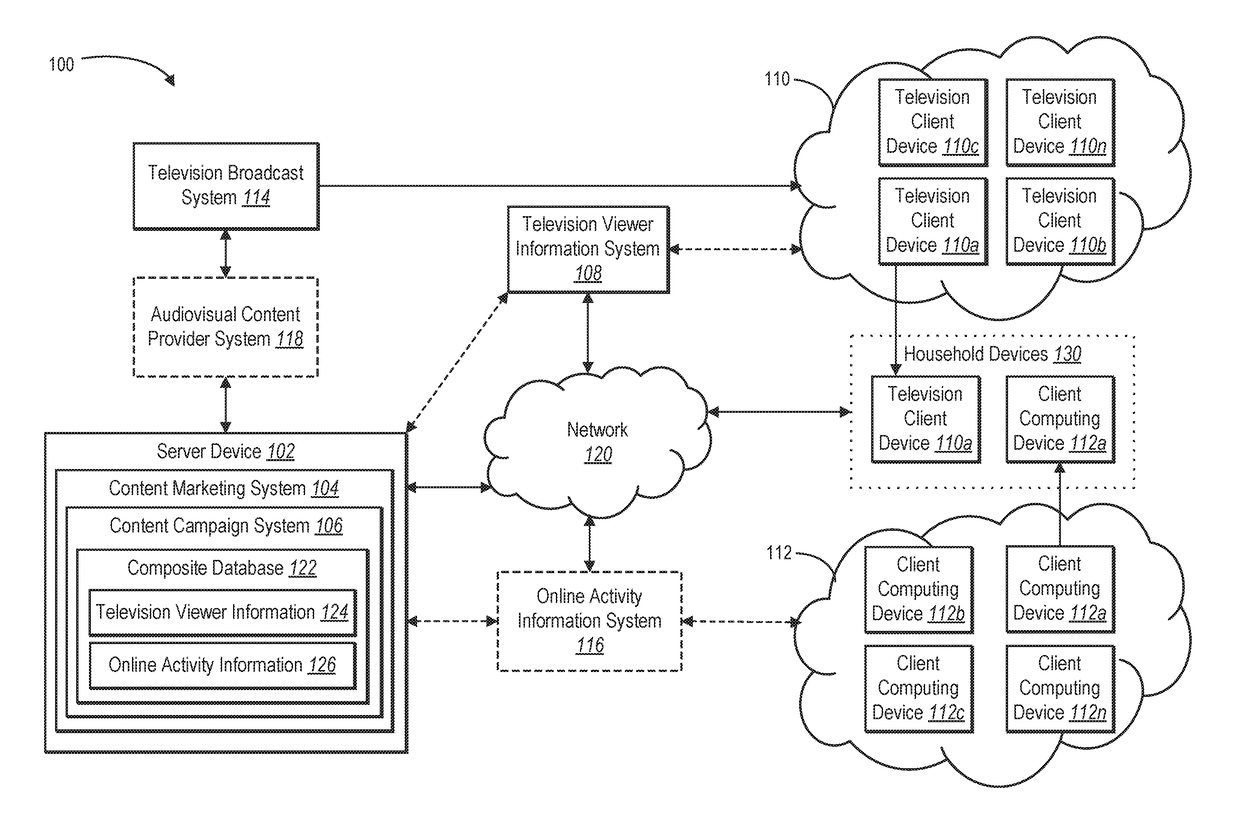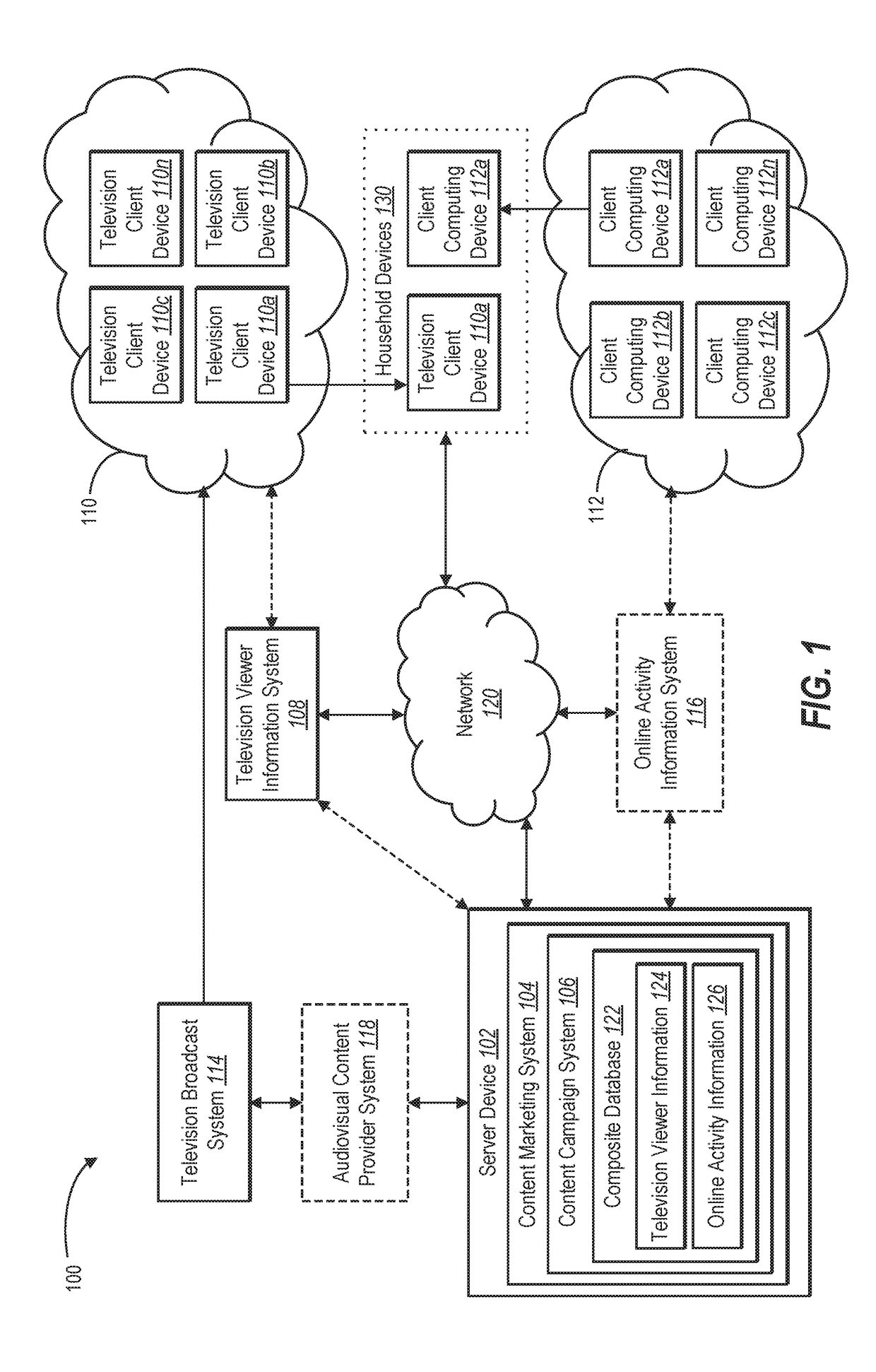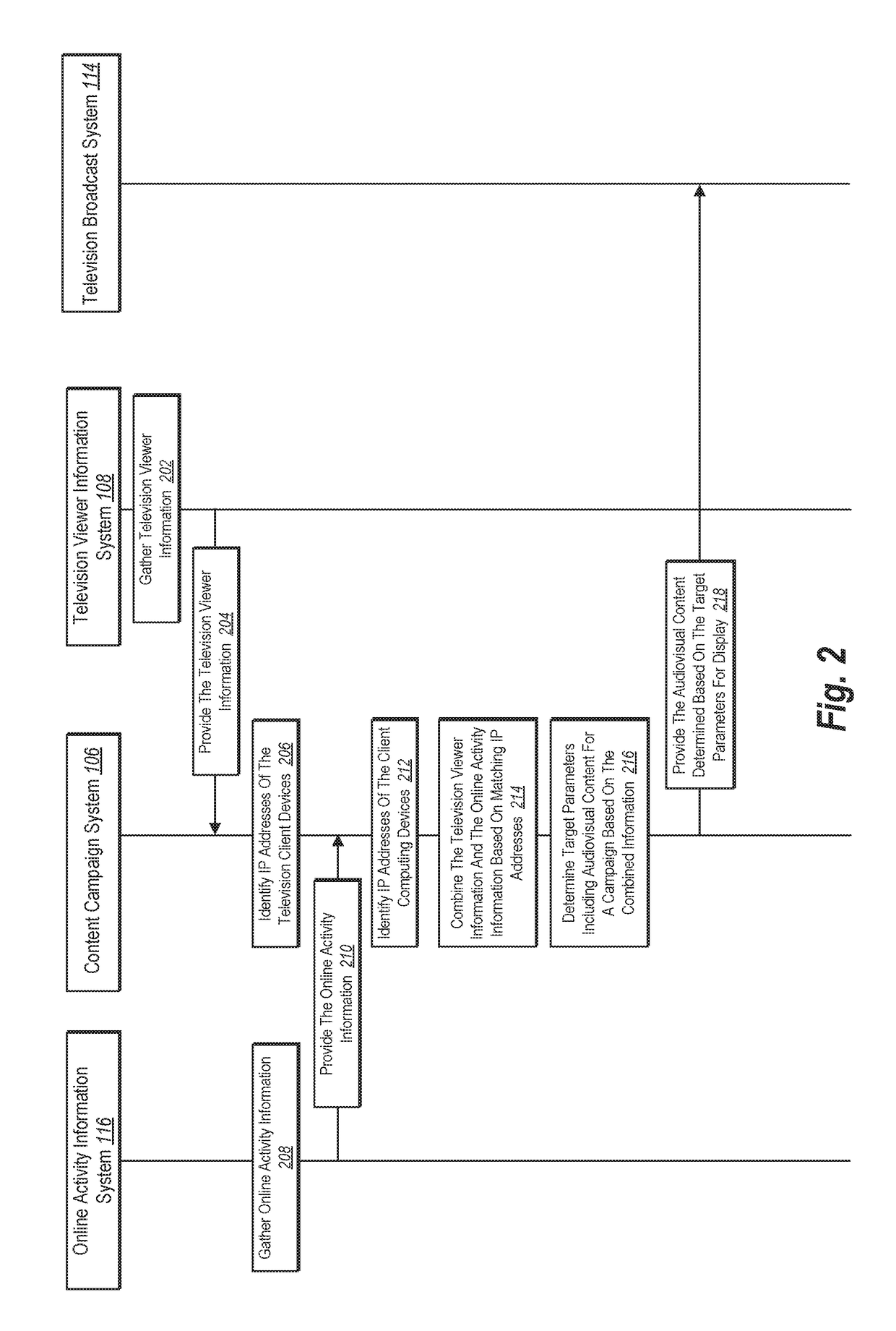Digital audiovisual content campaigns using merged television viewer information and online activity information
a technology of television viewer information and digital audiovisual content, applied in the direction of selective content distribution, broadcast services for monitoring/identification/recognition, instruments, etc., can solve the problems of untimely, inaccurate, and insufficient third-party survey data, and achieve the effect of improving the design and implementation of audiovisual and effectively and efficiently selecting linear television advertising
- Summary
- Abstract
- Description
- Claims
- Application Information
AI Technical Summary
Benefits of technology
Problems solved by technology
Method used
Image
Examples
Embodiment Construction
[0027]One or more embodiments of the present disclosure include a content campaign system that improves the selection of linear television programming based on generating up-to-date and accurate correlations between television client devices and client computing devices. For example, in one or more embodiments, the content campaign system receives television viewer information corresponding to television client devices (e.g., television viewer information gathered directly from television client devices and not set-top-box or other similar devices) and online activity information corresponding to client computing devices. The content campaign system can identify a correspondence between the television viewer information and the online activity information for a number of individual users or households. In particular, the content campaign system can by comparing common data features, such as IP addresses, from the television viewer information and the online activity information to i...
PUM
 Login to View More
Login to View More Abstract
Description
Claims
Application Information
 Login to View More
Login to View More - R&D
- Intellectual Property
- Life Sciences
- Materials
- Tech Scout
- Unparalleled Data Quality
- Higher Quality Content
- 60% Fewer Hallucinations
Browse by: Latest US Patents, China's latest patents, Technical Efficacy Thesaurus, Application Domain, Technology Topic, Popular Technical Reports.
© 2025 PatSnap. All rights reserved.Legal|Privacy policy|Modern Slavery Act Transparency Statement|Sitemap|About US| Contact US: help@patsnap.com



